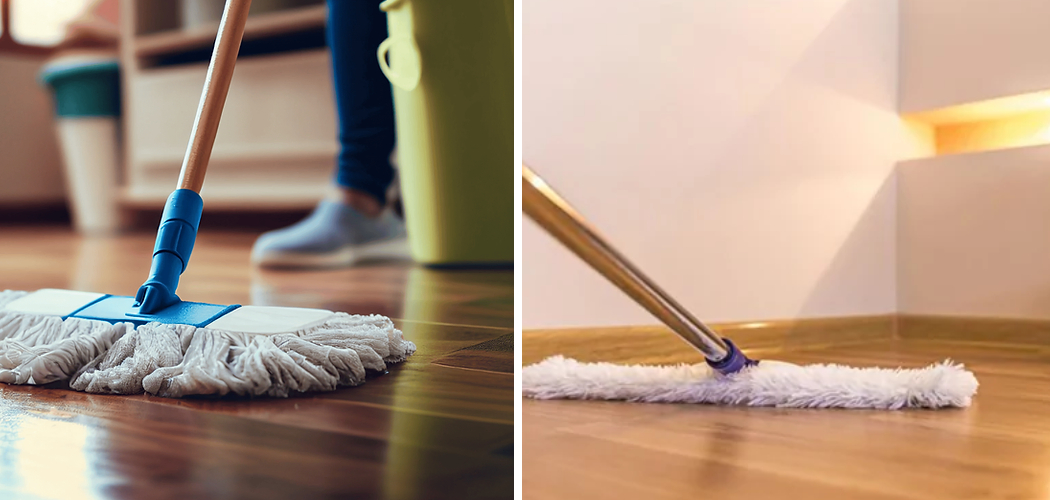Are you looking for a way to make your home’s floors shine? By knowing how to properly clean and maintain SPC flooring, you can keep them sparkling and healthy. Spc or Stone Polymer Composite is one of the most durable yet easy-to-maintain types of flooring available on the market today.
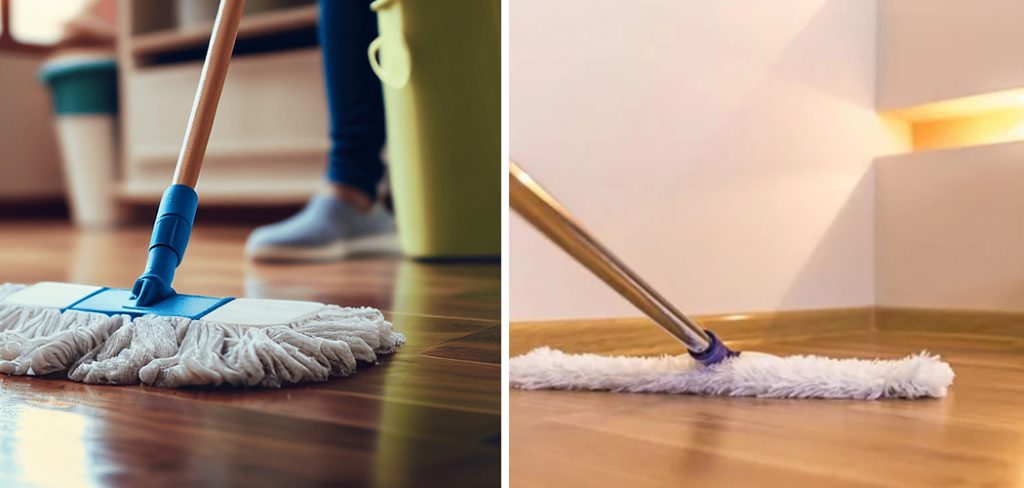
With proper care, this type of floor can last for years without showing major signs of wear and tear. In this blog post, we will discuss all the essential tips that will help you get the best results when cleaning SPC floors in your house. Read on to learn more about how to clean SPC flooring!
Supplies You Will Need to Clean SPC Flooring
- A vacuum cleaner with a soft-bristled attachment
- Soft cloths and rags
- A bucket of warm water (mild detergent, if needed)
- Mop
- Mild all-purpose cleaner or wood floor cleaner
- Microfiber mop head (for damp mopping)
Step-by-Step Guidelines on How to Clean SPC Flooring
Step 1: Vacuum Your Floor
Before doing any cleaning, you should always vacuum your floor first. This will help to get rid of dirt and dust so that the other cleaning techniques work more effectively. Make sure to use a soft-bristled attachment on your vacuum cleaner as this will reduce the chances of scratching or dulling the surface of the SPC flooring.
Step 2: Use a Mild Cleaner and Mop
Mix a small amount of mild all-purpose cleaner or wood floor cleaner with warm water in your bucket. Dip your mop into the solution and wring out any excess liquid before mopping. Start at one end of the room and work your way across using long, even strokes to clean. Make sure to rinse out your mop after every few passes and wring it out again before continuing.
Step 3: Wipe Down the Floor
Once you’ve finished mopping, take a clean rag or cloth and dip it into the cleaning solution. Wring out any excess liquid before wiping down the floor. This will help remove any leftover dirt or grime that the mop may have missed. Wiping down the floor regularly with a damp cloth is also an important part of regular maintenance for SPC flooring.
Step 4: Dry the Floor Thoroughly
Once you’ve finished cleaning, it’s essential to dry your floors thoroughly. You can do this by taking a dry cloth or towel and wiping away any remaining moisture from the floor. This will help to prevent water stains and prolong the life of your SPC floors. Make sure you pay special attention to corners and edges, where moisture can easily build up.
Following these simple steps will help you keep your SPC floors clean and looking like new. Regular cleaning and maintenance are essential for keeping these floors in great condition, so be sure to do it regularly! With the right supplies and a bit of elbow grease, you’ll have beautiful, clean SPC floors that will last for years.
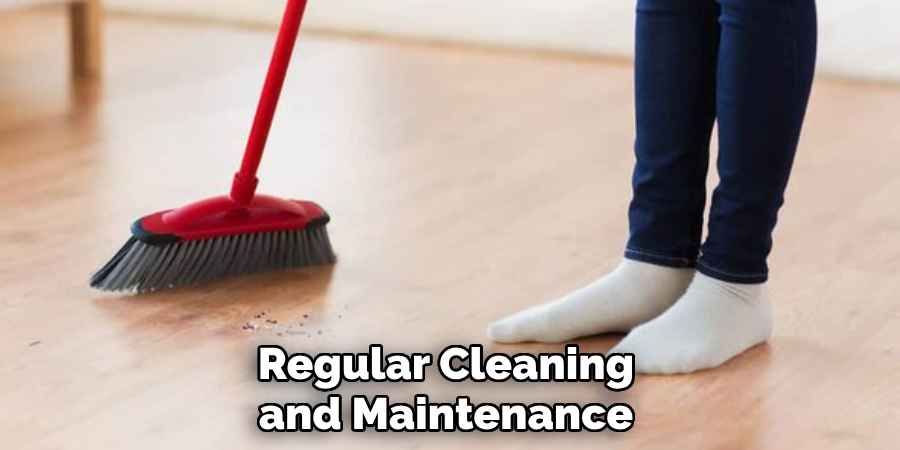
Additional Tips and Tricks to Clean SPC Flooring
- For stubborn dirt or stains, dilute a cup of white vinegar in four gallons of warm water and mop the area.
- When vacuuming, use the hard floor setting to prevent scratching and damage to your SPC flooring.
- Avoid using any wax-based cleaners as they can leave a dull finish on the surface.
- To keep your floor looking shiny and new, use a cleaner specifically designed for SPC floors.
- After mopping the floor, make sure to dry it thoroughly to prevent water from seeping into the joints.
- If you must mop with soap or detergent, make sure to rinse thoroughly after each application as any residue can damage the surface.
- Use caution when moving furniture over SPC flooring to avoid scratching or denting the surface.
- If your SPC flooring has become damaged, it can sometimes be fixed with sanding and refinishing.
- Avoid using abrasive cleaning pads as they may scratch the surface of your SPC flooring.
- 10. For tougher jobs such as removing paint or adhesive residue, use a soft cloth dampened with mineral spirits to gently scrub away the substance.
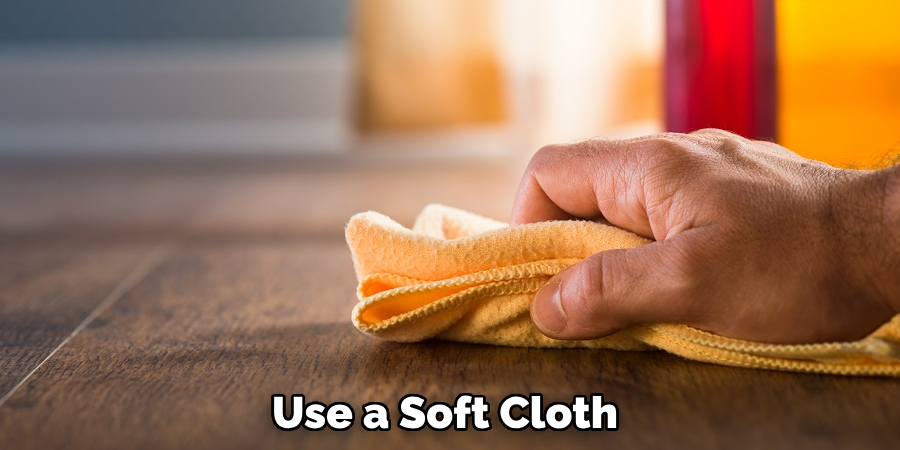
Following these tips and tricks will help keep your SPC flooring looking great for years to come. With proper care and maintenance, you can rest assured that your floor will remain as beautiful as the day it was installed. Remember, regular cleaning is one of the most important things you can do to protect and maintain your investment in SPC flooring. So make sure to clean your floors regularly with the proper cleaning products and techniques to keep them looking great!
Things You Should Consider to Clean SPC Flooring
1. Cleaning Solutions:
Before you begin cleaning your SPC flooring, it is important to choose the right cleaning solution. Use a mild pH-neutral cleaner specifically designed for vinyl flooring or hardwood floors. Do not use any harsh chemical cleaners such as bleach, ammonia, or vinegar, as these can damage the surface of your SPC flooring.
2. Sweeping and Vacuuming:
Before you mop your floor, it is important to remove any dirt or debris from the surface by sweeping or vacuuming. This will help to prevent scratches on the flooring, so be sure to do this step carefully. While you will not need to use a special broom or vacuum for SPC flooring, it is important to use one with soft bristles so that you do not damage the surface of the floor.
3. Mop Cleaning:
Once you have swept and vacuumed your SPC floor, you are ready to mop it. It is best to use a microfiber mop and warm water to clean the floor. Be sure to wring out any excess water from your mop before mopping, as too much moisture can cause damage to the surface of your SPC flooring. Additionally, do not use too much cleaner when mopping, as this can also lead to damage.
4. Drying Your Floor: :
Once you have finished mopping, it is important to dry the floor. You can use a clean towel or cloth to quickly wipe away any excess moisture from the surface of your SPC floor. This will help ensure that no water spots are left behind and prevent damage to the flooring. It is also important to make sure that the room is well-ventilated to allow the floor to dry completely.
5. Regular Maintenance:
Finally, it is important to remember that regular maintenance is key when it comes to keeping your SPC floor looking its best. Vacuuming and mopping regularly will help keep dirt and debris from building up on the surface of your flooring, which can cause scratches and damage. Additionally, waxing the floor every few months can help to protect it from wear and tear and make it look its best.
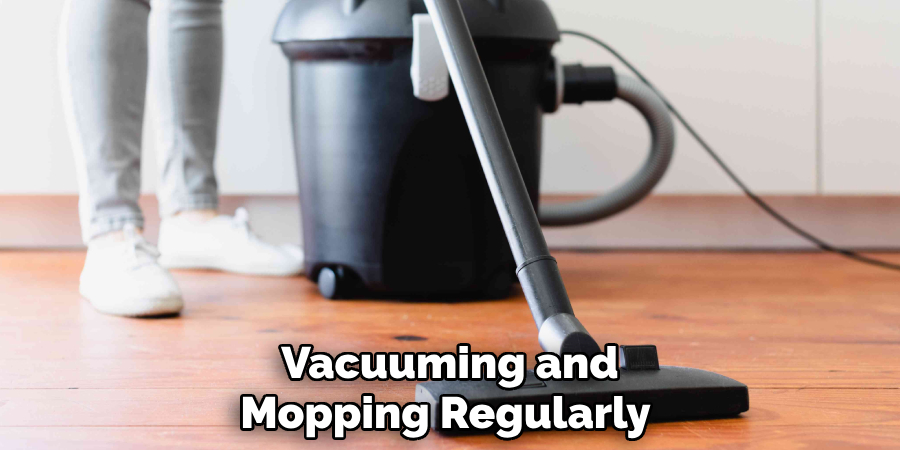
By following these Considerations when cleaning your SPC flooring, you can help keep it looking new for years to come. With regular maintenance and the right cleaning solutions, you will be able to enjoy your beautiful floor for many years.
Frequently Asked Questions
How Often Should I Clean My SPC Flooring?
It is recommended that you vacuum or sweep your SPC flooring regularly to prevent dirt and dust buildup. Mop the floors once a week using a damp mop and a mild detergent specifically formulated for cleaning SPC flooring. Spot clean any spills or stains immediately. For more deep cleaning, use a specialized SPC floor cleaner. Be sure to follow the instructions on the bottle for best results. Avoid using too much water as it can damage the planks or tiles.
Should I Use a Steam Mop?
It is not recommended to use a steam mop on SPC flooring as high temperatures can cause damage and discoloration. However, if you choose to do so, keep the steam mop at a low setting and avoid using it too often. Be sure to test the steam mop in an inconspicuous area first to make sure that there is no discoloration or damage.

How Do I Remove Scratches from My SPC Flooring?
Scratches are usually caused by dragging furniture or shoes across the floor. To remove scratches, use fine-grain sandpaper to gently buff away any surface scratches. For deeper scratches, contact a professional flooring contractor for advice on how best to repair them.
What Products Should I Avoid Using?
Avoid using abrasive cleaners, vinegar, soap-based detergents, and wax products as these can damage SPC flooring. Be sure to test any new cleaning product before use in an inconspicuous area first.
Are There Any Special Considerations for Installing SPC Flooring?
When installing SPC flooring, be sure to leave a gap around the perimeter of the room to allow for expansion. It is also important to thoroughly clean and dry the subfloor before installation so that dirt and dust do not weaken the adhesive over time. Finally, be sure to follow the manufacturer’s instructions for best results.
Can I Put Area Rugs on My SPC Flooring?
Yes, it is safe to use area rugs on SPC flooring. However, it is important to choose the right rug for this type of flooring. Look for a rug that is lightweight and has a non-skid or non-slip backing. This will help keep the rug in place and reduce the risk of accidental slipping. Additionally, avoid using rubber or latex backings as these can damage SPC flooring over time.
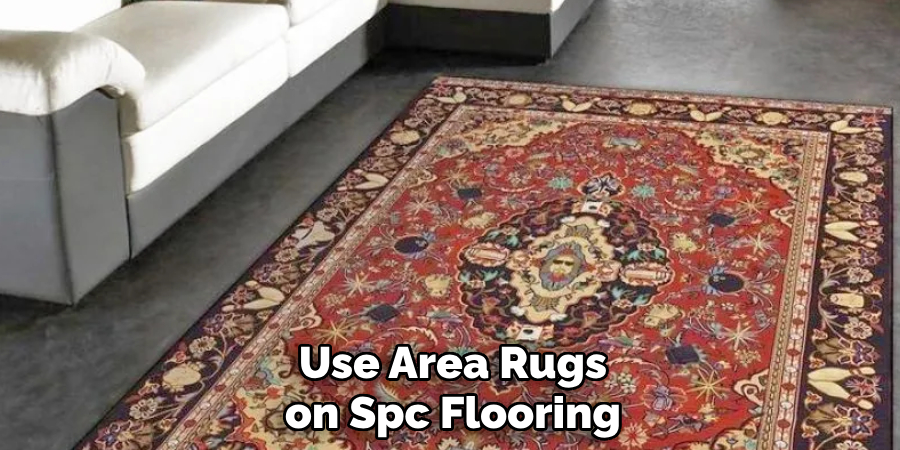
Conclusion
All in all, it is not hard to keep your SPC flooring looking great and with minimal maintenance effort. To ensure the longevity of give stunning and clean finish that you have come to expect from SPC, regularly sweep, vacuum or dust mop the floor without any harsh chemical-based cleaning products.
Mopping should be done either with a manufacturer’s approved cleaning product or warm water treated with a small amount of detergent. If more stubborn stains occur don’t resort to drastic measures as this may lead to further damage; instead, learn how to use the appropriate cleaner for the particular stain, which is mostly available at higher-grade stores. Do take extra care when using a steam mop as the heat can cause warping damage if used improperly.
With these simple yet basic steps, you can protect your SPC flooring from becoming worn out and dirty over time. Remember that preventative maintenance gives your flooring a longer life span and more resilient results so always take extra precaution rather than performing sudden deep cleanings. Now that you know how to clean SPC flooring effectively, why not try other strategies for maintaining this beautiful material today?
